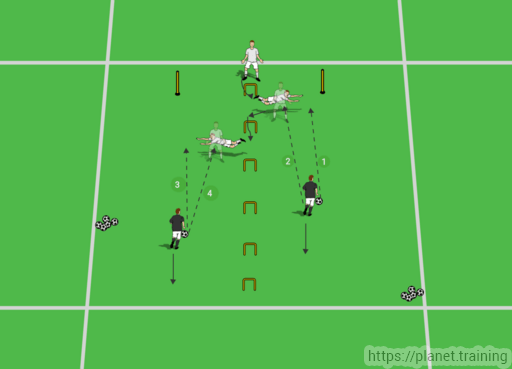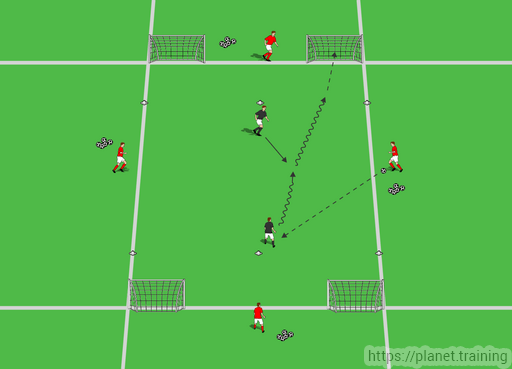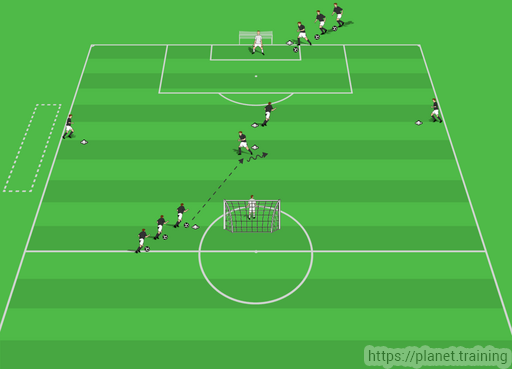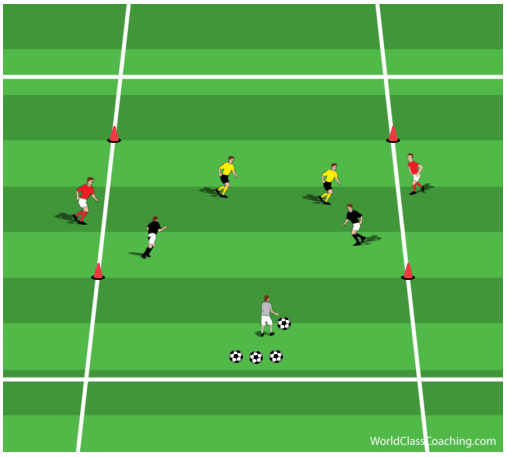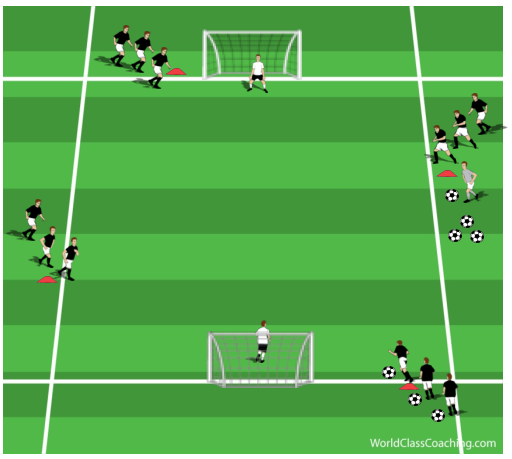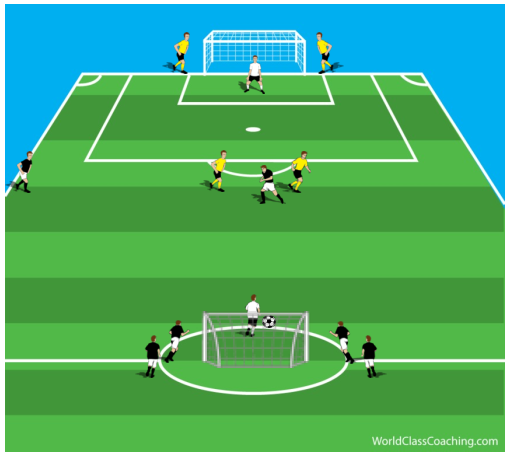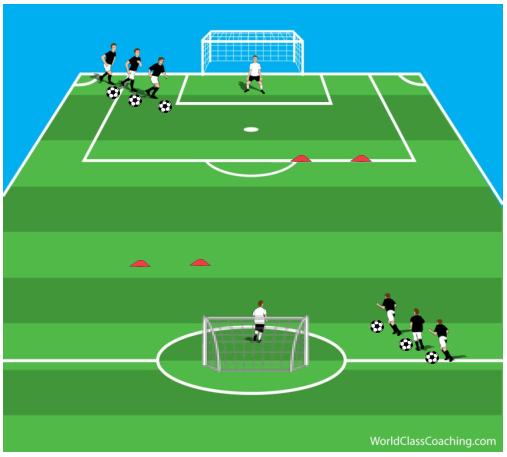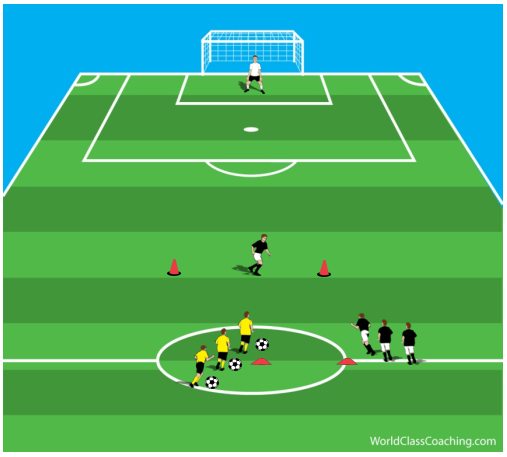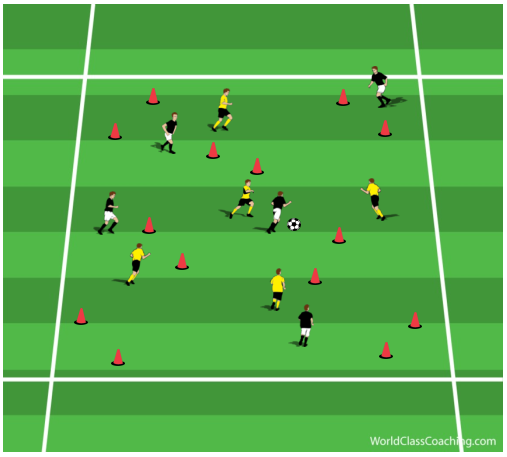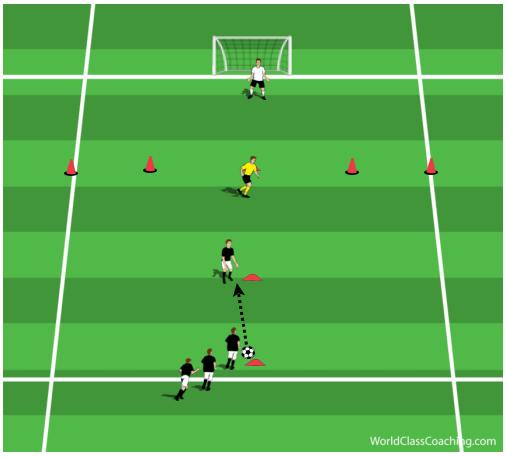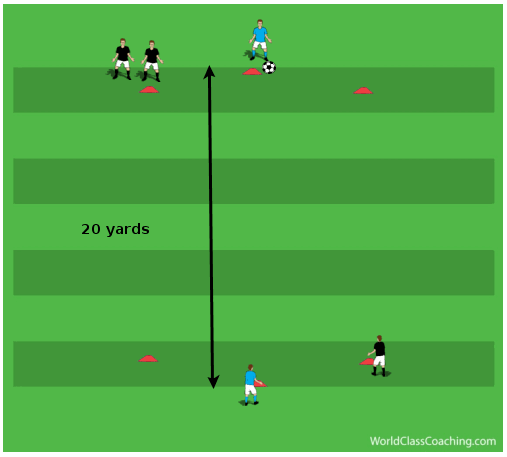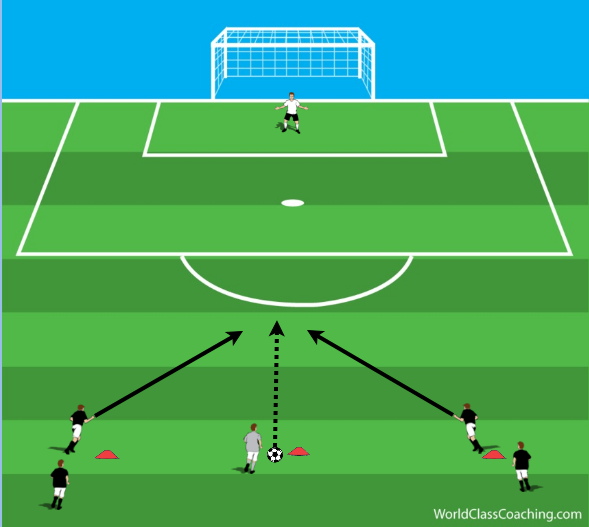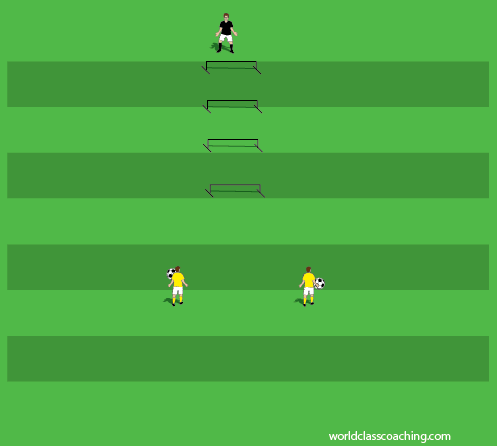By Alex Trukan
The exercise is focused on improving Aerobic Power. This physical component helps in recovering more efficiently and quickly after high intensity, anaerobic actions. Therefore, it helps to maintain quantity of explosive efforts of the players throughout the whole match. In more detail, it aids supplementation of high quality oxygen to lungs and muscles by improving circulation (more red blood cells and stronger heart) and ventilation (better lung capacity).
That is achieved in 5v5 Small Sided Game which is known as highly effective tool for improving tactical, technical as well as physical components. Small Sided Games ensure high motivation of players, enjoyment and competitiveness. In addition, this practice is strongly related to 11v11 soccer format as it includes all relevant components of it (opponent, direction, goals, attacking/defending/transition etc.).
Set up and directions:
Organise a pitch of approximately 30x40 yards (depending on base fitness level: bigger pitch-bigger volume/lower intensity) with one goal on each side. Divide players into two teams of 5. Normal soccer rules apply. Encourage competition, i.e. the team that loses the game takes the equipment out of the pitch.
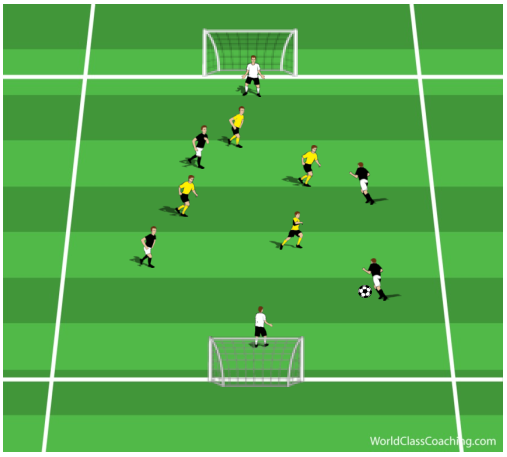
As a basic progression to increase perceptual and physical demands, divide the pitch into two halves and set the condition that
Continue reading
